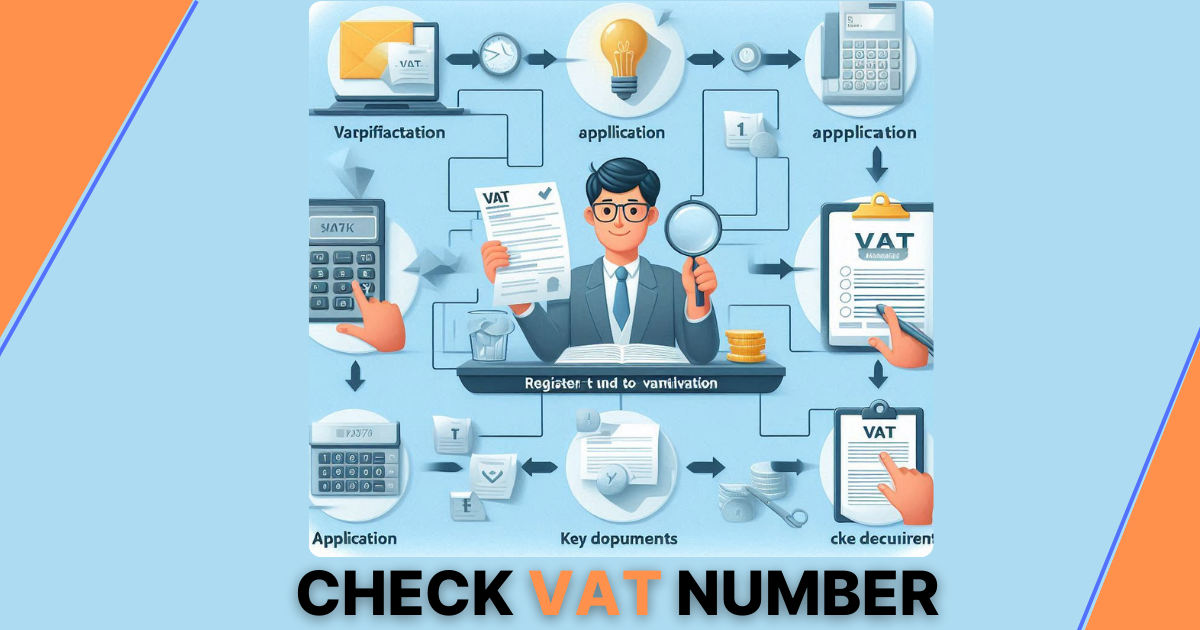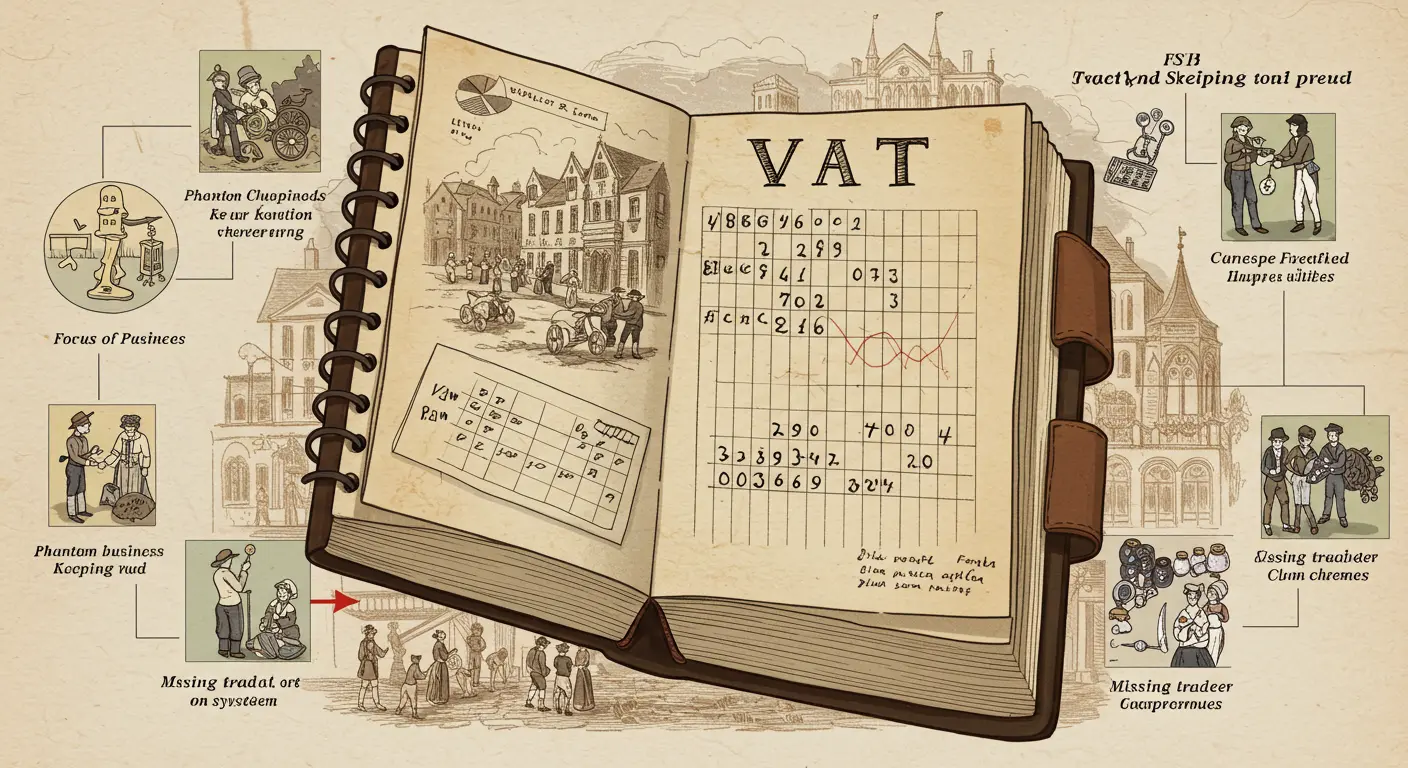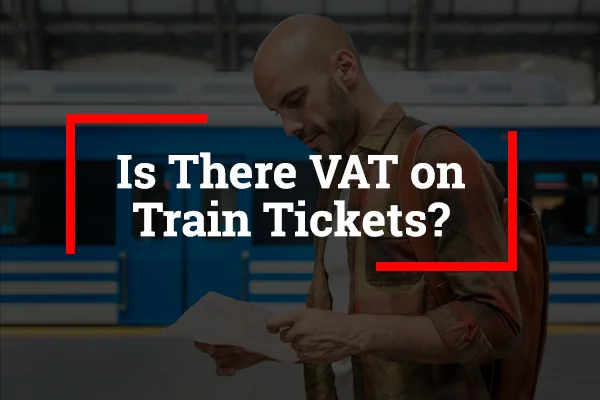How to Check a VAT Number?
Understanding VAT (Value Added Tax) and its importance for businesses is crucial, especially when it comes to VAT numbers. Whether you’re a business owner dealing with VAT for the first time or a consumer wanting to verify a supplier’s VAT registration, this guide covers everything you need to know about VAT numbers, how to get one, and how to check if a company is VAT registered. We’ll also explore the process of EU VAT registration and the key obligations for VAT-registered businesses.
What is a VAT Number?
A VAT number is a unique identifier assigned to businesses that are registered for VAT. This number allows businesses to charge VAT on goods and services, as well as reclaim VAT on purchases. In the UK, a VAT number consists of nine digits, often preceded by the “GB” country code. The VAT number is essential for both domestic and international transactions, ensuring compliance with tax regulations.
Example: A VAT number in the UK might look like this: GB123456789.
VAT Number Check
A VAT number check is an essential step for businesses to ensure that their suppliers or clients are properly registered for VAT. Verifying a VAT number helps avoid fraudulent transactions and ensures that your business is reclaiming VAT correctly. You can easily check a VAT number using the VAT Information Exchange System (VIES), which allows you to verify the VAT numbers of businesses across the EU.
How to check if a company is VAT registered: You can use VIES for EU VAT numbers, or in the UK, you can check directly with HMRC by visiting the HMRC VAT number verification tool. If you don’t have a VAT number, how to check if a company is VAT registered without a VAT number may require you to contact the company directly or look for their VAT details on invoices or contracts.
What is a VAT Number and How Can I Get One?
A VAT number is used by businesses to charge VAT on sales, reclaim VAT on purchases, and comply with tax reporting obligations. You’ll need a VAT number if your business reaches the VAT registration threshold or if you voluntarily choose to register to claim back VAT on business expenses.
How to get a VAT number: To get a VAT number, you must register your business for VAT with HMRC (in the UK) or the relevant tax authority in your country. You can apply online, and after registration, you’ll be issued a VAT identification number.
When Do You Need an EU VAT Number?
If you are selling goods or services across the EU, you will likely need an EU VAT number. VAT registration is required when your business’s taxable turnover exceeds the VAT threshold set by each EU member state.
For example, if you are a UK business selling digital services to EU customers, you need an EU VAT number to comply with VAT laws in those countries.
Transactions that do not (usually) oblige you to get an EU VAT number: Certain B2B (business-to-business) transactions within the EU may not require you to register for VAT in every country where you trade, thanks to reverse charge mechanisms. However, this can depend on the specific nature of the goods or services.
When Do I Need a VAT Number in the EU?
Examples: You may need a VAT number in the EU if:
- You sell goods from the UK to consumers in the EU and exceed distance selling thresholds.
- You supply digital services to EU customers and need to comply with the EU VAT rules through One-Stop-Shop (OSS) registration.
What About EU VAT Registration Thresholds?
Each EU country has its VAT registration threshold, which determines when a business must register for VAT. For example, if you are selling goods or services in an EU country and your sales exceed the local VAT threshold, you are required to register for VAT in that country. These thresholds vary widely, so it’s important to check the rules in each country you do business with.
How Do I Get a VAT Number?
To get a VAT number, you need to apply to HMRC or the relevant tax authority in the country where your business is based. The process typically involves providing information about your business activities, turnover, and expected VAT liability.
The registration process can take anywhere from 10 to 30 days. If there are complications, such as incomplete information, it may take longer.
What Documents Do You Need to Get an EU VAT Number?
To apply for an EU VAT number, you typically need:
- Proof of business registration (e.g., incorporation certificate)
- Identification documents for directors or owners
- Evidence of business activity (e.g., contracts or invoices)
- Information about expected turnover
How Long Does It Take to Get a VAT Number?
In most cases, VAT registration in the UK takes 2-4 weeks, though it can vary depending on the complexity of the application. How long it takes for VAT registration can also depend on whether additional information is needed or if the tax authority requires further verification.
How Do I Issue Invoices from My VAT Number in the EU?
Once you have your VAT number, you must include it on all invoices for goods and services where VAT is applicable. Each invoice must display the VAT amount, your VAT number, and the VAT number of your customer (if applicable). Ensuring that VAT is correctly applied and recorded on invoices is essential for compliance.
What are the accounting obligations for my foreign VAT number?
When you have a VAT number in an EU country (or several), you must submit regular VAT returns in each country where you are registered. This includes reporting all taxable sales and VAT collected, as well as reclaiming VAT on business purchases. You are also responsible for ensuring that your VAT records are accurate and up to date.
How Can You Check if Someone is VAT Registered?
How can you check if someone is VAT registered? You can verify a business’s VAT registration by checking the VAT number through online tools like VIES for EU numbers or HMRC’s VAT checker for UK numbers. If you don’t have a VAT number, how to check if a company is VAT registered without a VAT number may involve checking company invoices, and contracts, or contacting the company directly for verification.
Calculate Your Costs on VAT Returns
It’s important to understand how VAT affects your business finances. Calculate your costs on VAT returns by keeping detailed records of all VAT charged on sales and reclaimed on purchases. This will help you accurately complete your VAT returns and avoid errors that could lead to penalties.
Conclusion
Understanding a VAT number and how to check its validity is essential for businesses operating in the UK and across the EU. Whether you’re wondering how to get a VAT number, verifying a company’s VAT registration status, or learning about EU VAT rules, staying compliant with VAT regulations is critical. If you need assistance with VAT registration or checking VAT numbers, professional accounting services can help ensure everything runs smoothly.
















